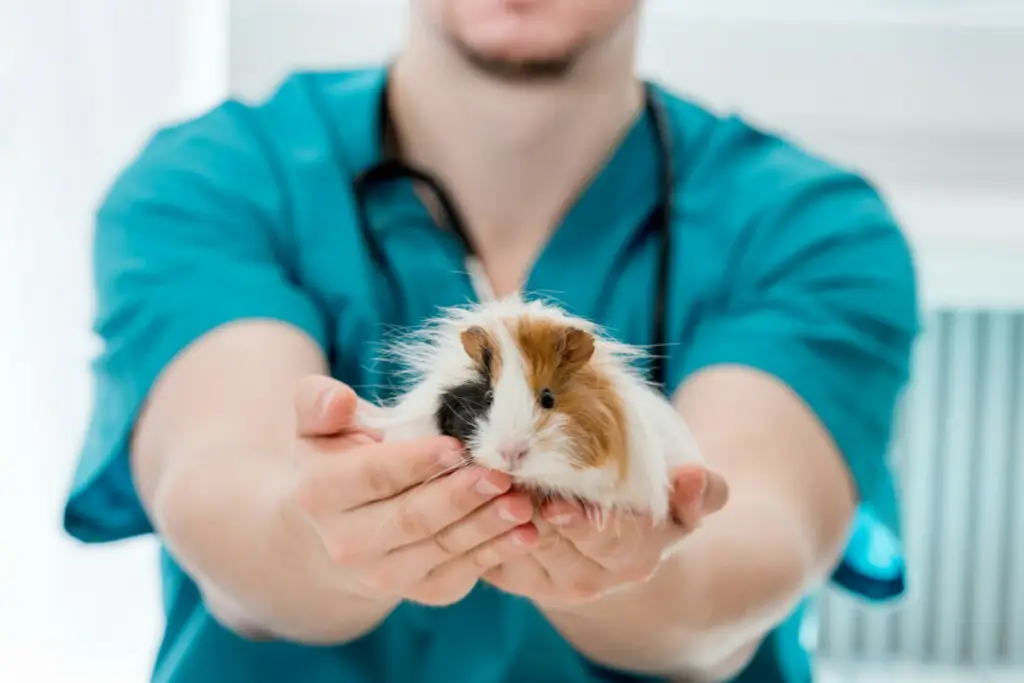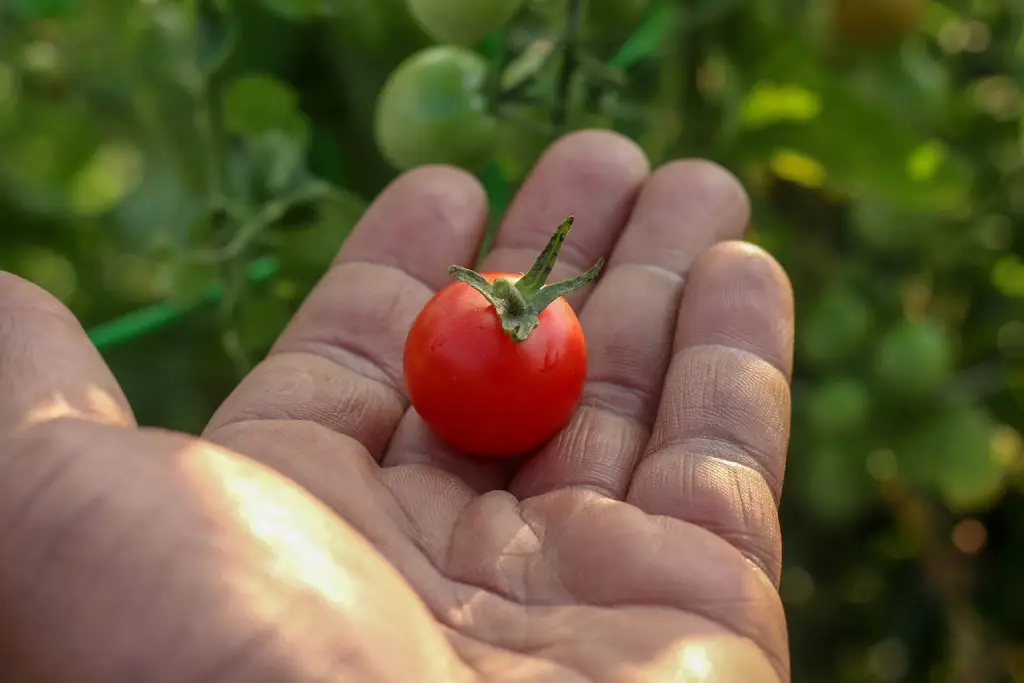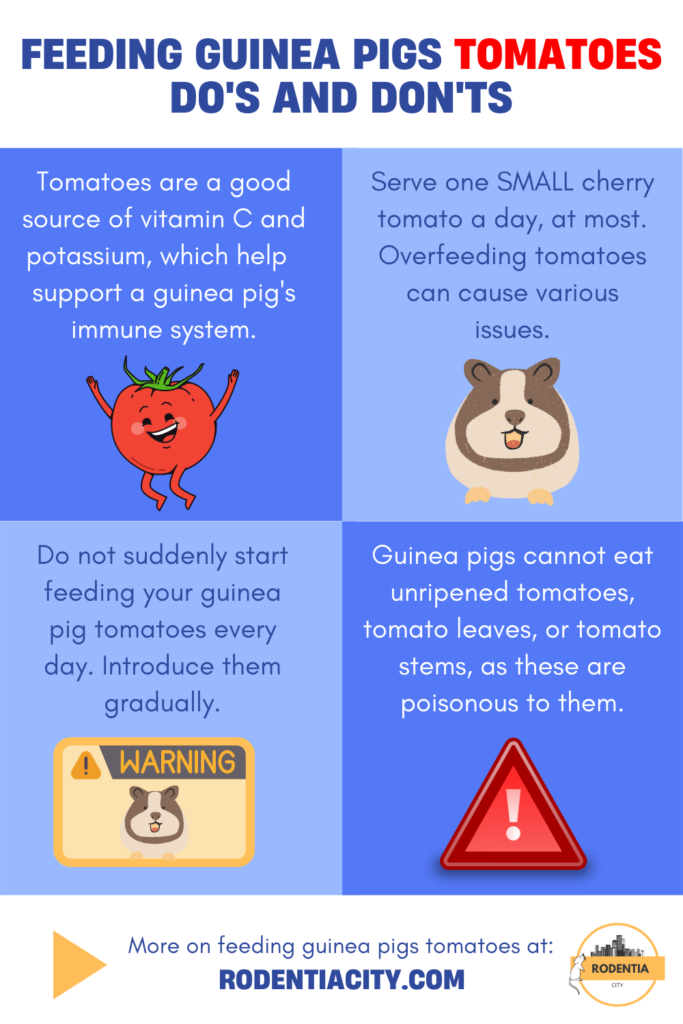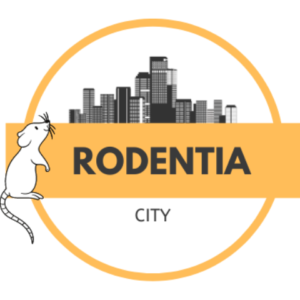Tomatoes are a cheap and easy fruit to get access to. Many people who have gardens have more tomatoes than they know what to do with. If you have a lot of tomatoes, you may want to give them to your pet guinea pig as a snack. However, can guinea pigs eat tomatoes?
Guinea pigs can eat ripe tomatoes, but guinea pig owners need to be careful. Guinea pigs cannot eat the leaves or stems of tomatoes, only the fruit itself. Guinea pigs also cannot eat unripe tomatoes, so make sure that the tomatoes are completely red with no green on them.
As you can see, guinea pigs can eat tomatoes, but you need to be careful because many parts of tomatoes are poisonous to guinea pigs. It is important to know which parts of the tomato are good for your pet and which parts are not, so continue reading.
Nutritional Benefits of Tomatoes for Guinea Pigs
Guinea pigs can eat a variety of fruits and vegetables, but that does not mean that all of them are safe and healthy for your guinea pig to consume. In general, tomatoes are safe for guinea pigs to eat, and they have many health benefits.
Tomatoes are a great source of fiber for your guinea pig. Fiber is necessary for correct digestive health. Fiber also helps keeps your guinea pig’s eyes sharp and healthy. Tomatoes are also high in Vitamin C. Guinea pigs cannot produce their own Vitamin C, so it is important to include Vitamin C in their diet so they can avoid health issues. A lack of Vitamin C causes scurvy or digestive issues.
Tomatoes also have Vitamin K, which helps with bone development. Vitamin K is crucial for blood clotting and bone health. Another great vitamin that tomatoes have is folate, which helps with tissue growth. Potassium also is very prevalent in tomatoes. Potassium is used for blood pressure control and is also responsible for regulating fluid in the body. Having a good potassium intake can lower the risk of heart disease and kidney stone development.
Tomatoes don’t have a lot of calcium, which is good because calcium in guinea pigs often causes gallstones or bladder sludge. Tomatoes also have a variety of antioxidants. One of these antioxidants is lycopene, which has been linked to countless health benefits. Antioxidants play a big role in fighting off infections and diseases. Antioxidants also can lower the risk of heart disease and cancer.
Potential Risks of Feeding Tomatoes to Guinea Pigs

Sadly, not all parts of tomatoes are safe to feed to your guinea pig. Only the ripened part of tomato fruit is safe for your guinea pig to eat.
Guinea pigs cannot eat unripened tomatoes, tomato leaves, or tomato stems. These parts of the plant have a compound called “Tomatine”, which is similar to Solanine. This is a glycoalkaloid poison that is commonly found in nightshade species of plants. They reside in the tomato plant in small quantities. Since it is only in small quantities, it is not poisonous to humans in small amounts. However, if you give them to a guinea pig, they can cause serious health issues, as guinea pigs are much smaller than humans.
Another thing to acknowledge is that 90% of your guinea pig’s diet should be high-quality grass hay. They should have access to that hay at all times so they can graze throughout the day. This is because it helps keep your guinea pig’s teeth in good shape and their digestive system running smoothly. Therefore, do not give them too many tomatoes.
Tomato seeds can also be dangerous for your guinea pig to consume. The seeds are often a choking hazard. If you stick to smaller tomatoes like cherry or grape tomatoes, the seeds will be extremely small and likely won’t be a choking hazard. If you are feeding your guinea pig a larger tomato, you need to remove the seeds.
Tomatoes are also high in oxalic acid. Too much oxalic acid can cause sores to form in your guinea pig’s mouth. It also can cause Cheilitis, which is a condition that causes inflammation of the lips.
Recommended Serving Size and Frequency of Tomatoes in Guinea Pigs’ Diet
You should not feed your guinea pig too many tomatoes for the reasons listed above. You should only feed them one small cherry tomato a day.
Only feed a small portion of a large tomato to your guinea pig every day. If your guinea pig seems to be developing sores in its mouth or lips, stop feeding them tomatoes for a week or two.
Introducing Tomatoes to Guinea Pigs’ Diet Gradually

It is also important to not suddenly start feeding your guinea pig tomatoes every day due to the acid. If you suddenly start giving a tomato to your guinea pig every day, you will increase the odds that your guinea pig will get Cheilitis.
Because tomatoes are high in water content, they can cause your guinea pig to get an upset stomach. If you wish to make tomatoes a regular part of your guinea pig’s diet, you need to start with small amounts and increase the serving size over time. If you do not do this, your guinea pig will probably get Cheilitis or get sick in other ways.
A good routine to start with would only give your guinea pig a tomato once or twice per week. Over a few months, you can start increasing the amount you give them if you really want your guinea pig to be eating tomatoes.
However, if your guinea pig is under 6 months old, you need to be more careful. They have a much more sensitive digestive system that can be more easily upset by the acid in tomatoes. Only give a small piece of tomato to baby guinea pigs occasionally, and mix it with leafy greens to get them familiar with the new veggie.
Cherry or grape tomatoes are good types of tomatoes to gradually introduce your guinea pig to. They do not have large seeds, so they likely won’t cause your guinea pig to choke. One small cherry tomato really is the perfect portion size for your guinea pig.

Recent Posts
It is no secret that furry little chinchillas are widely considered to be among the cutest of animals alive. Their soft and thick fur coats make them look more like a fuzzy pillow than an animal! One...
Just like pretty much all rodents, chinchillas need to chew on things to keep their teeth at a healthy length. They love to chew on wood, but not all kinds of wood are good for them. So, which types...

